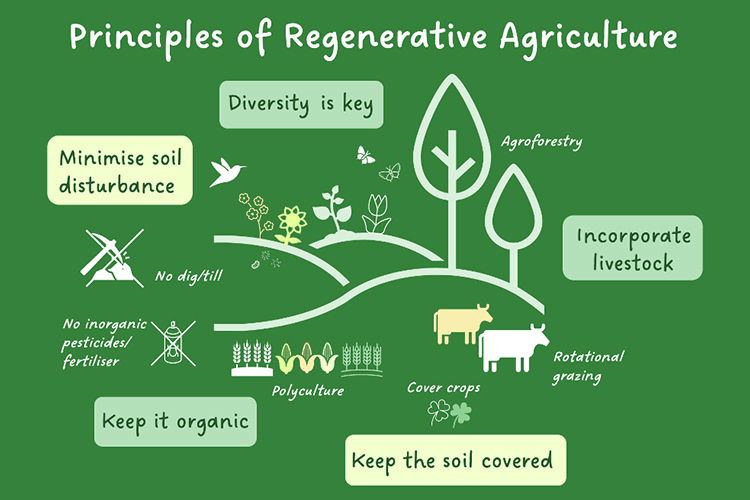Regenerative Agriculture: Restoring Ecosystem Health

Regenerative agriculture is not just a farming practice; it’s a philosophy that seeks to rejuvenate the land while fostering a harmonious relationship between agriculture and the environment. This agriculture focuses on rebuilding soil health, enhancing biodiversity, and harnessing natural processes to create resilient and sustainable farming systems. In this blog, we delve into the principles of regenerative agriculture, highlighting practices like cover cropping, crop rotation, and no-till farming that contribute to its success.
- Cover Cropping:
One of the fundamental principles of regenerative agriculture is the use of cover crops. These are crops that are specifically grown to cover the soil between main crop seasons. Cover crops prevent soil erosion, improve soil structure, and increase organic matter. Additionally, they act as living shields against weed growth, reducing the need for chemical herbicides.
- Crop Rotation:
Crop rotation is an age-old practice that plays a pivotal role in regenerative agriculture. By alternating the types of crops planted in a given area over time, the risk of pest and disease buildup is reduced. Different crops have varying nutrient needs and vulnerabilities, and rotating them disrupts the life cycles of pests and pathogens, promoting a healthier ecosystem.
- No-Till Farming:
Traditional plowing and tilling can disturb the soil’s structure and lead to erosion. On the other hand, no-till farming involves minimal soil disturbance by planting seeds directly into untilled soil. This practice prevents erosion, preserves soil structure, and encourages the growth of beneficial soil organisms. As a result, the soil becomes a thriving ecosystem that supports plant growth and resilience.
These regenerative practices collectively contribute to the enhancement of biodiversity. Healthy soils teem with diverse microorganisms, fungi, and insects contributing to nutrient cycling and pest control. By prioritizing soil health, regenerative agriculture creates an environment where these beneficial organisms can flourish, naturally suppressing pest and disease populations.
The beauty of regenerative agriculture lies in its holistic approach. Rather than relying on chemical interventions, it leverages the power of nature to maintain balance and resilience. This approach not only reduces the environmental impact of farming but also supports the long-term viability of agricultural systems.
In conclusion, regenerative agriculture is a transformative approach that goes beyond conventional farming practices. Through cover cropping, crop rotation, and no-till farming, farmers are rebuilding soil health, promoting biodiversity, and fortifying natural resilience against pests and diseases. By nurturing the land and working in harmony with nature, regenerative agriculture paves the way for a more sustainable and prosperous agricultural future.
Discover the future of sustainable farming. Contact Indochem Agrovet now to learn how regenerative agriculture can transform your land and boost productivity.

